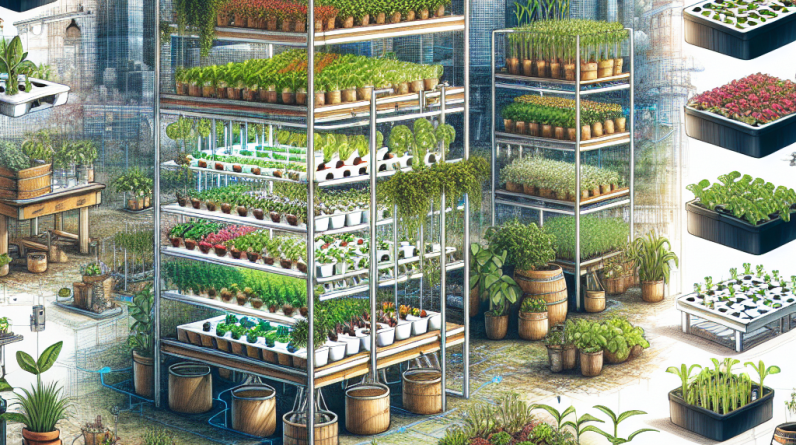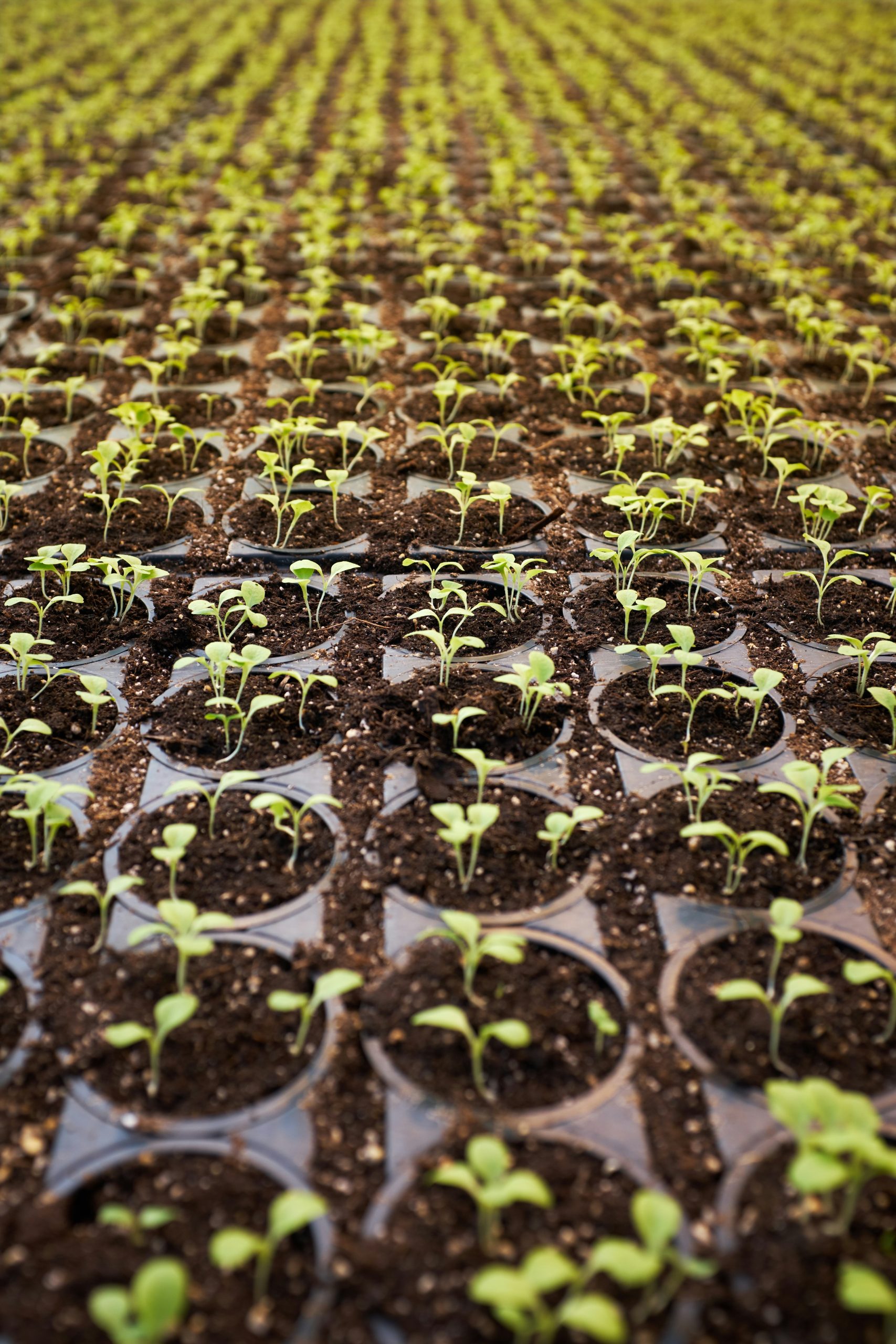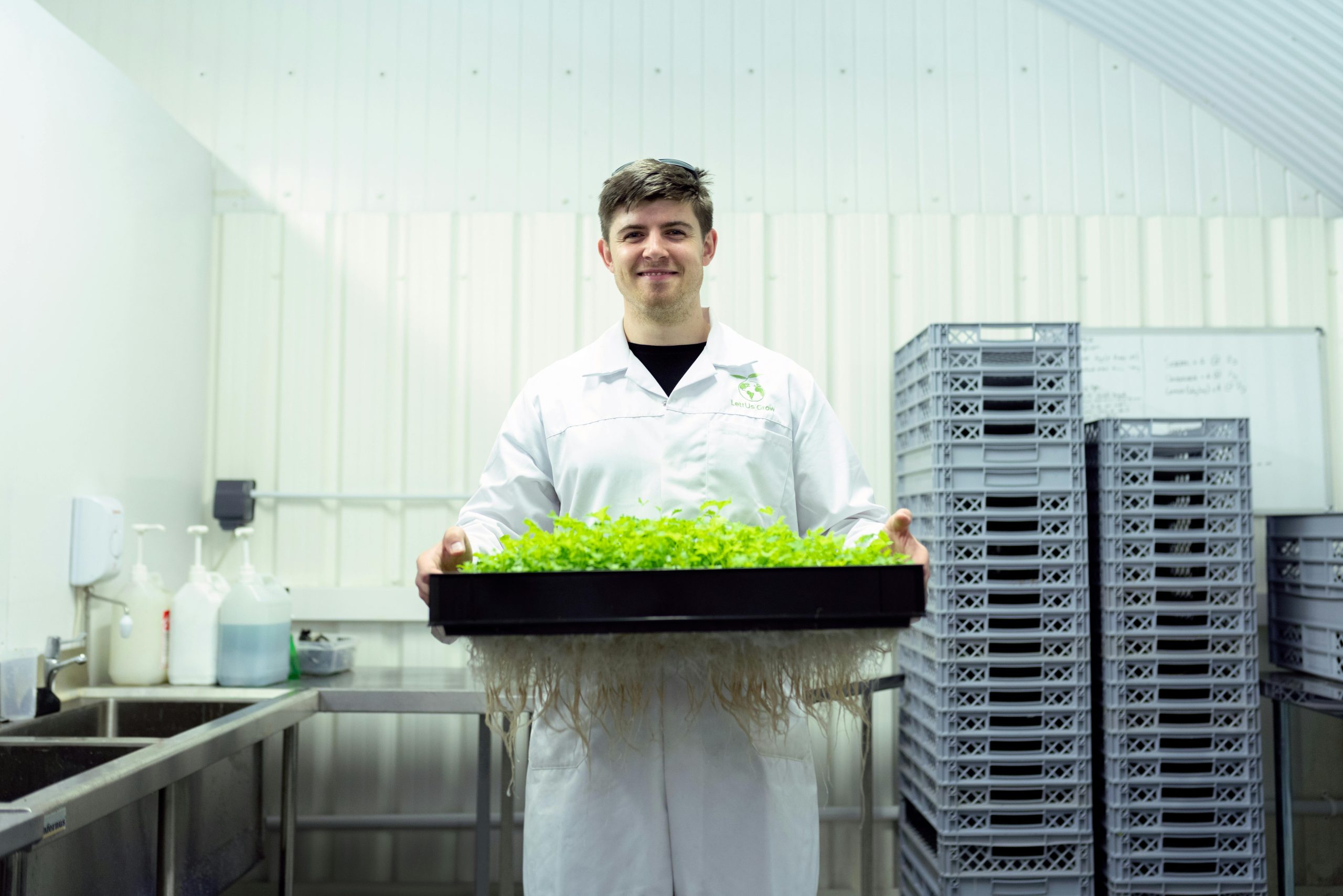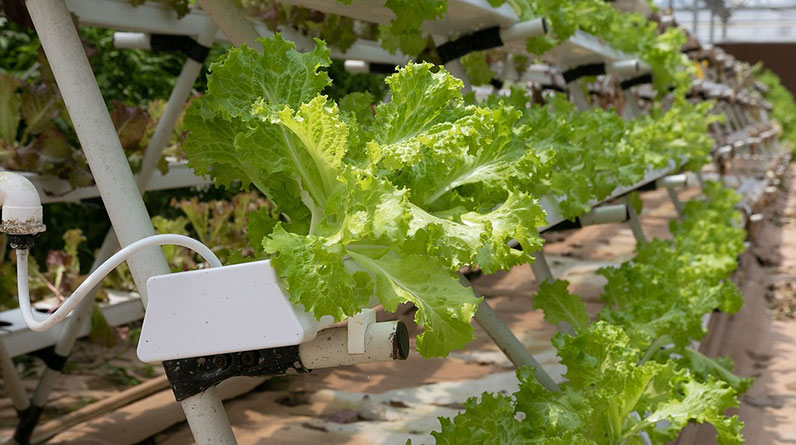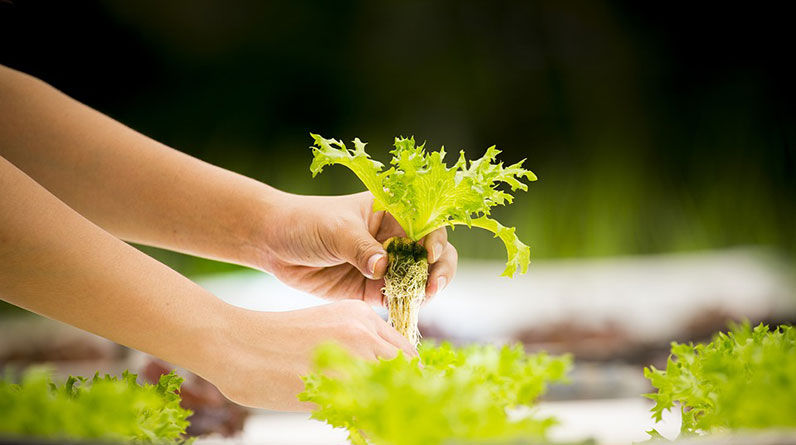- 1. Optimize Light Spectrum for Plant Growth
- 2. Choose the Right LED Grow Lights
- 3. Manage Light Intensity and Duration
- 4. Maintain Proper Nutrient Delivery
- 5. Regulate Temperature and Humidity
- 6. Monitor and Adjust pH Levels Carefully
- 7. Incorporate Automation and Smart Technology
1. Optimize Light Spectrum for Plant Growth
Understanding the Role of Light Spectrum
When it comes to hydroponic gardening with led lights, the spectrum of light plays a crucial role in plant health and productivity. In 2025, research shows that full-spectrum LED lights, which mimic natural sunlight, provide the ideal range for photosynthesis and growth. These lights emit a combination of blue, red, and other wavelengths that support different growth stages, from seedling to harvest.
Blue light (~450 nm) encourages vegetative growth, making it essential in the early stages. Red light (~660 nm), on the other hand, promotes flowering and fruiting. Combining these spectra ensures your plants develop robust roots, strong stems, and abundant yields. Many top-tier hydroponic systems are now integrated with customizable spectrum options to optimize results.
My experience with hydroponic gardening with led lights has shown that tailored light spectra can significantly boost growth rates. For example, adjusting the spectrum during different growth phases leads to healthier plants and higher yields. As technology advances, LED lights that dynamically shift spectra based on plant needs are becoming more accessible for home growers in 2025.
Best Practices for Spectrum Optimization
To maximize the benefits of hydroponic gardening with led lights, I recommend investing in fixtures that offer adjustable spectra. Use blue-dominant lights during the seedling stage, and transition to red-dominant lights as plants mature. This targeted approach accelerates development while conserving energy.
Additionally, some systems incorporate programmable spectrum settings, allowing you to customize based on specific crops like herbs, lettuce, or tomatoes. Always monitor plant responses and adjust accordingly. Combining spectrum control with proper distance and intensity ensures your plants receive optimal light for each growth phase.
In 2025, staying informed about the latest LED technology and spectrum advancements will give you a competitive edge in hydroponic gardening with led lights. Remember, tailored lighting can dramatically influence both growth speed and overall plant quality.
2. Choose the Right LED Grow Lights
Types of LED Grow Lights Available
In 2025, choosing the right LED grow lights is more important than ever for successful hydroponic gardening with led lights. There are several types on the market, including full-spectrum panels, quantum boards, and COB (Chip-on-Board) LEDs. Each offers unique advantages depending on your space, budget, and crop type.
Full-spectrum LED panels tend to be versatile and beginner-friendly, providing a balanced light profile suitable for most plants. Quantum boards are highly efficient and favored by hobbyists and commercial growers for their high output and energy efficiency. COB LEDs deliver intense light for large-scale setups but can be more expensive and require careful heat management.
My experience suggests starting with a full-spectrum LED panel if you’re new to hydroponic gardening with led lights. As you gain experience, upgrading to more specialized or high-output options can further enhance your yields and reduce energy costs over time.
Factors to Consider When Selecting LED Grow Lights
Selection should be based on factors such as coverage area, energy efficiency, spectrum options, and price. Ensure the light intensity is adjustable so you can tailor it to different plant stages. Additionally, check the PAR (Photosynthetically Active Radiation) ratings, which indicate the quality and quantity of light the plants receive. In 2025, high PAR values correlate with faster growth and healthier plants.
Durability and warranty are also critical. Look for products with good heat dissipation features and solid warranties, especially if you plan to scale up your hydroponic system. Combining these criteria with a suitable budget ensures you get the best value and consistent performance.
Ultimately, choosing the right LED grow lights tailored to your hydroponic setup will set the foundation for a thriving, energy-efficient indoor garden in 2025.
3. Manage Light Intensity and Duration
Timing and Light Cycles
In 2025, understanding the optimal light cycle is fundamental for hydroponic gardening with led lights. Most plants require 12-16 hours of light daily, depending on the species and growth stage. Automating these cycles with timers ensures consistency, a key factor for healthy development.
For seedlings and young plants, a shorter light period with lower intensity promotes root development without stress. As plants mature, increasing both duration and intensity boosts photosynthesis, leading to quicker growth and larger yields. Many growers find success with a 16-hour light and 8-hour dark cycle, mimicking natural conditions.
Using quality timers and integrated control systems in 2025 makes managing light schedules straightforward, helping you prevent issues like overexposure or insufficient lighting.
Adjusting Light Intensity
Optimal light intensity, measured in PPFD (Photosynthetic Photon Flux Density), varies by plant type but generally falls between 200-1000 μmol/m²/sec. Monitoring and adjusting light intensity during different growth phases ensures plants receive enough light without stress or bleaching. Many LED systems come with dimmable features, making fine-tuning easier.
If your plants show signs of light stress, such as leaf burn or bleaching, lower the intensity or increase distance from the lights. Conversely, if growth slows or plants appear leggy, consider increasing the light output. Consistent monitoring and gradual adjustments are the best practices in hydroponic gardening with led lights.
Implementing proper light management techniques will maximize your indoor garden’s productivity while conserving energy in 2025.
4. Maintain Proper Nutrient Delivery
Hydroponic Nutrient Solutions
Efficient nutrient delivery is essential in hydroponic gardening with led lights. Since plants don’t rely on soil, a balanced nutrient solution ensures proper growth. In 2025, many growers are using pre-mixed, pH-balanced formulas tailored for hydroponic systems, which simplifies feeding routines.
Includes fertilizers rich in nitrogen, phosphorus, and potassium, along with micronutrients like calcium, magnesium, and iron. Regularly testing and adjusting EC (electrical conductivity) levels helps maintain optimal nutrient concentration. Keeping nutrient solutions clean prevents issues like algae growth or disease.
My advice is to update your nutrient formulas according to plant growth stages, increasing nutrient strength during flowering and fruiting. Using automated dosing systems can streamline this process, leading to healthier plants and higher yields.
Monitoring and Adjusting Nutrients
Consistent monitoring of nutrient levels is a key part of success in hydroponic gardening with led lights. Use reliable testing kits or electronic meters to track pH and EC frequentlyâat least once a week in most setups.
Adjustments should be made promptly if levels fall outside the optimal range: pH around 5.5 to 6.5 and EC based on the crop’s needs. Automated systems that adjust nutrients and pH levels help maintain stability, especially in larger-scale operations.
In 2025, advances in sensor technology make real-time nutrient monitoring more affordable and precise, leading to healthier plants and maximized productivity in hydroponic systems.
5. Regulate Temperature and Humidity
Importance of Climate Control Indoors
Maintaining the right temperature and humidity levels is vital for the success of hydroponic gardening with led lights. In 2025, indoor cultivation systems often incorporate climate control features or recommend specific ranges: temperatures between 65-80°F (18-27°C) and humidity levels around 50-70%, depending on the plant stage.
Proper climate management prevents issues like mold, pests, and root rot. LED lights, being energy-efficient and low-heat emitters, simplify temperature regulation compared to traditional grow lights. However, additional cooling or heating may be necessary depending on your environment.
My experience confirms that stable conditions optimize photosynthesis and nutrient uptake, resulting in healthier and faster-growing plants.
Tools and Tips for Climate Optimization
Utilize thermometers, hygrometers, and climate controllers to monitor and adjust your indoor environment proactively. Ventilation is crucialâuse exhaust fans or air purifiers to keep air fresh. In especially humid or hot areas, dehumidifiers and air conditioning can help maintain ideal conditions.
I also recommend setting up humidity trays or misting systems to fine-tune moisture levels. Keeping the environment stable during different growth phases boosts overall productivity and reduces stress on your plants.
In 2025, smart climate management tools integrated with your hydroponic system can automatically adjust temperature and humidity, making your gardening endeavors more efficient and stress-free.
6. Monitor and Adjust pH Levels Carefully
Why pH Matters in Hydroponics
pH stability is critical for nutrient uptake in hydroponic gardening with led lights. In 2025, research demonstrates that maintaining pH within 5.5 to 6.5 ensures maximum nutrient solubility and absorption. Deviations can lead to deficiencies or toxic build-ups, severely impacting plant health.
Since hydroponic solutions lack soil’s buffering capacity, constant pH monitoring is necessary. I suggest testing pH daily when you start, then reducing frequency as you become more experienced.
Using automatic pH controllers can greatly simplify this process, providing real-time adjustments and keeping your plants in an optimal environment for growth.
Best Practices for pH Management
- Regularly test pH levelsâpreferably daily during early growth stages
- Use pH adjusters like pH up or pH down solutions to correct deviations
- Maintain consistent nutrient solution circulation to prevent pH swings
By keeping a close eye on pH and making timely adjustments, your hydroponic gardening with led lights will thrive, yielding healthy, vibrant plants in 2025.
7. Incorporate Automation and Smart Technology
Benefits of Smart Hydroponic Systems
Automation has transformed hydroponic gardening with led lights in 2025. Smart systems allow you to control lighting, nutrient delivery, climate conditions, and pH levels remotely via apps or integrated dashboards. This convenience improves consistency, reduces manual labor, and enhances plant health.
Many commercially available systems feature sensors that monitor environmental variables and make adjustments automatically. For example, adjusting LED light intensity based on plant age or triggering nutrient dosing when deficiencies are detected.
From small home setups to commercial farms, automation boosts efficiency and yields, making indoor gardening accessible and less time-consuming.
Implementing Smart Features for Better Results
Start by integrating programmable timers, climate controllers, and pH/nutrition sensors. Invest in systems with data logging and alert features so you can troubleshoot issues promptly. Use artificial intelligence or machine learning tools to optimize conditions based on real-time data.
In 2025, innovative tech solutions are more affordable and user-friendly than ever, empowering even beginners to succeed in hydroponic gardening with led lights. Combining automation with expert knowledge ensures a productive, low-maintenance indoor garden.
Conclusion
Hydroponic gardening with led lights is revolutionizing how we grow food indoors, offering faster growth, higher yields, and energy savings. By applying these 7 powerful tips for 2025âranging from spectrum optimization and choosing the right lights to automationâyou can make your indoor garden more efficient and productive. Remember, staying informed about emerging technologies and best practices will help you succeed in this exciting field.
Whether you’re a seasoned grower or just starting, implementing these strategies will ensure your hydroponic setup flourishes. Happy gardening!
Frequently Asked Questions
1. What are the best LED lights for hydroponic gardening with led lights in 2025?
In 2025, full-spectrum LED grow lights with adjustable spectra and high PAR ratings are considered the best options for hydroponic gardening with led lights. Look for energy-efficient models that suit your space and crop needs.
2. How much light do hydroponic plants need?
Most plants thrive with 12-16 hours of light daily, with intensity adjusted based on growth stage. Use PPFD measurements to determine appropriateness and prevent stress or deficiency.
3. How do I control pH levels effectively in hydroponic systems?
Regular testing with pH meters, combined with automatic pH controllers and proper nutrient management, helps maintain stable pH levels. Aim for a pH range of 5.5 to 6.5 for optimal nutrient uptake.
4. Can automation improve my hydroponic gardening with led lights?
Absolutely! Automated systems can control lighting, climate, nutrient delivery, and pH, leading to consistent results, less manual effort, and higher yields in 2025.
5. Why is spectrum control important in hydroponic gardening with led lights?
Spectrum control influences plant growth phasesâblue for vegetative, red for floweringâmaximizing development and yield. Adjustable spectrum LED lights offer personalized growth environments.


